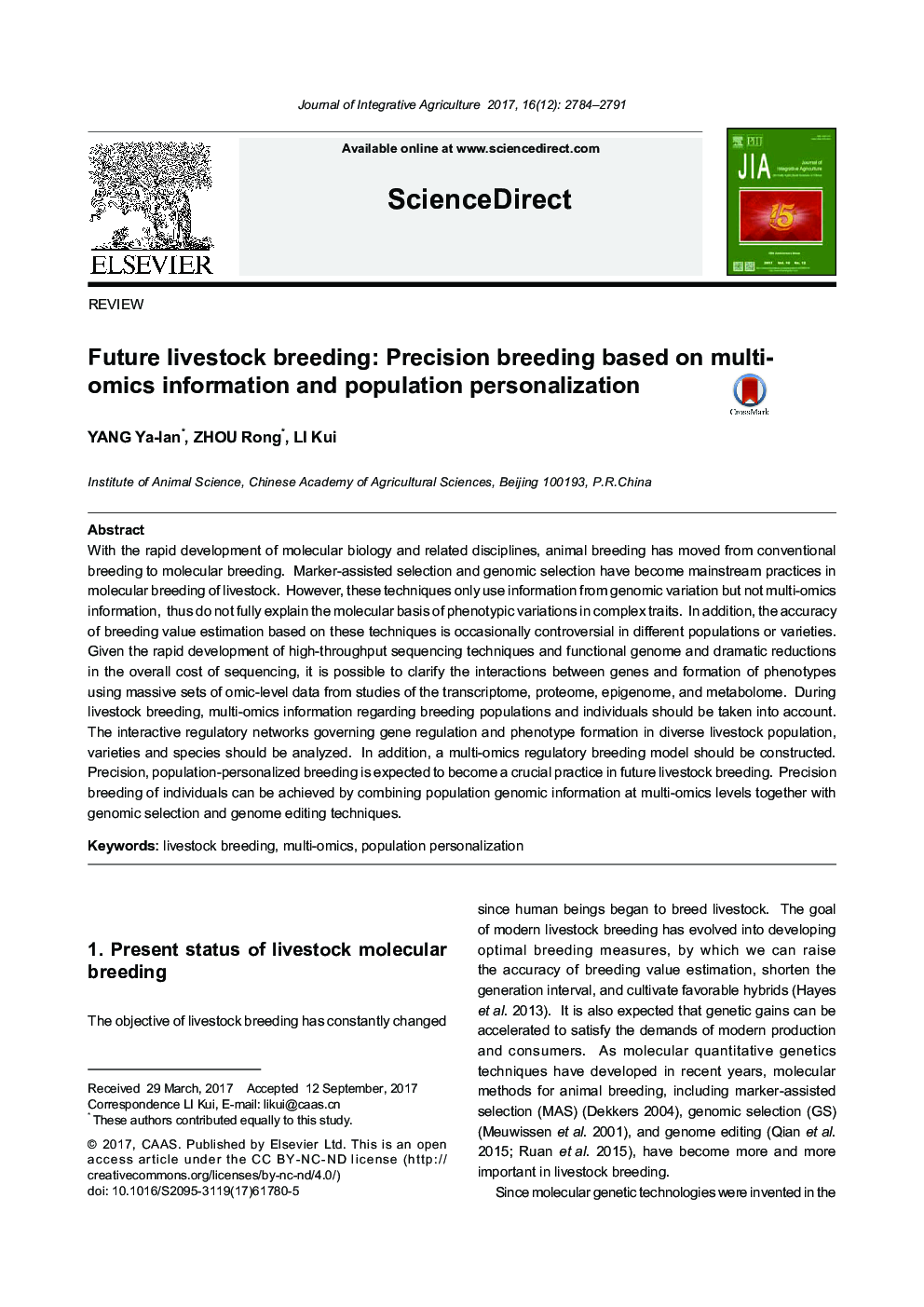| Article ID | Journal | Published Year | Pages | File Type |
|---|---|---|---|---|
| 8875774 | Journal of Integrative Agriculture | 2017 | 8 Pages |
Abstract
With the rapid development of molecular biology and related disciplines, animal breeding has moved from conventional breeding to molecular breeding. Marker-assisted selection and genomic selection have become mainstream practices in molecular breeding of livestock. However, these techniques only use information from genomic variation but not multi-omics information, thus do not fully explain the molecular basis of phenotypic variations in complex traits. In addition, the accuracy of breeding value estimation based on these techniques is occasionally controversial in different populations or varieties. Given the rapid development of high-throughput sequencing techniques and functional genome and dramatic reductions in the overall cost of sequencing, it is possible to clarify the interactions between genes and formation of phenotypes using massive sets of omic-level data from studies of the transcriptome, proteome, epigenome, and metabolome. During livestock breeding, multi-omics information regarding breeding populations and individuals should be taken into account. The interactive regulatory networks governing gene regulation and phenotype formation in diverse livestock population, varieties and species should be analyzed. In addition, a multi-omics regulatory breeding model should be constructed. Precision, population-personalized breeding is expected to become a crucial practice in future livestock breeding. Precision breeding of individuals can be achieved by combining population genomic information at multi-omics levels together with genomic selection and genome editing techniques.
Keywords
Related Topics
Life Sciences
Agricultural and Biological Sciences
Agricultural and Biological Sciences (General)
Authors
Ya-lan YANG, Rong ZHOU, Kui LI,
